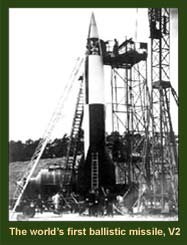|
Q. Could you tell us the differences between space development in the former Soviet Union and that of the Russian Federation?
 To begin with, let me tell you the history of our rocket technology. It has been 47 years since we launched the world's first artificial satellite, Sputnik, and 43 years since Yuri Gagarin became the first man to fly in space. These two events demonstrated that it is in Man's nature to want to see for himself, to explore, or as we say in Russian, to "feel" space with his own hands. To begin with, let me tell you the history of our rocket technology. It has been 47 years since we launched the world's first artificial satellite, Sputnik, and 43 years since Yuri Gagarin became the first man to fly in space. These two events demonstrated that it is in Man's nature to want to see for himself, to explore, or as we say in Russian, to "feel" space with his own hands.
These two events took place in the Soviet Union. I am now 92 years old. I took part in both of these events and many subsequent ones. But I became involved in rocketry and space development after working as an engineer in the aviation industry. In 1945, when the Second World War ended, I had to decide whether to stay in aviation or become a rocket engineer. I chose the latter, and on German territory, in collaboration with our former enemies, I studied and rebuilt the V-2 intermediate-range ballistic missile.
It would have been impossible to do this work in the Soviet Union, which was shattered by the war and ridden with famine. So in 1945 we organized an institute in Thuringia, where we gathered all the German specialists and started to rebuild German technology and design new rockets. We were joined by Sergei Korolev and hundreds of other Soviet specialists. We worked in Germany for almost a year and a half, and then went back to the Soviet Union in 1947. There, on October 18, 1947, we launched the first Soviet long-range ballistic missile. This is where the history of our national rocket technology begins.
Korolev was appointed head of our program, and later became the chief designer. I worked with him for almost twenty years, until he died in 1966. Over the last ten years, I was his chief assistant, in charge of designing guidance control systems for space vehicles, which we started developing after the launch of Sputnik in 1957.
I am very proud that we accomplished so much despite the human and economic losses our country suffered in the Second World War. But at the same time, my colleagues and I felt that we could have accomplished much more.
 Historians and journalists typically attribute the success of space science in the 20th century to scientists, designers, technicians and heroic cosmonauts. For the Soviet Union and Russia, success in space is forever associated with Sergei Korolev and Yuri Gagarin. I worked with Korolev for twenty years, and knew Gagarin well. But I have to say that credit must also be given to politicians, presidents and ministers, because space science is dependent on government support. Historians and journalists typically attribute the success of space science in the 20th century to scientists, designers, technicians and heroic cosmonauts. For the Soviet Union and Russia, success in space is forever associated with Sergei Korolev and Yuri Gagarin. I worked with Korolev for twenty years, and knew Gagarin well. But I have to say that credit must also be given to politicians, presidents and ministers, because space science is dependent on government support.
In the 20th century, the Soviet Union and the United States of America were the the great space powers. Both had wonderful scientists, enthusiasts and dreamers - they were an absolutely necessary but not sufficient factor for space development. The scientists' success was due not just to the support of national leaders, but to their strong expectations and demands for rapid success. These rigid demands were understandable because space technology is closely related to national interests in the military, economic, social, and scientific fields.
Under Korolev, we understood this right away, and we looked at space technology not just as an isolated field, but as part of a larger system, which includes a whole range of other technologies and which can lead to unexpected discoveries. It is very regrettable that many governments, particularly the new Russian leaders, do not understand this.
|













